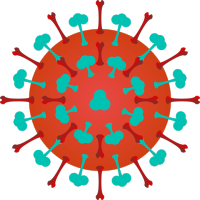search
| disease | Eczematoid Carcinoma |
smart_toy
bubble_chart Overview
Eczematoid carcinoma, also known as Paget's disease, presents similarly to eczema and predominantly occurs in the female breast. It originates from the mammary ducts and subsequently involves the breast, connective tissue, and skin. It can also appear in areas outside the breast, such as the armpits, external genitalia, perineum, and around the anus. In such cases, it is referred to as extramammary eczematoid carcinoma and may be associated with adenocarcinoma of the sweat glands.
bubble_chart Clinical Manifestations
- It mostly occurs in middle-aged and older women on one nipple or areola, and occasionally in men or in areas with abundant profuse sweating glands outside the breast;
- The initial skin lesion appears as a faint red scaly patch with clear boundaries, possibly accompanied by erosion and exudation, resembling eczema but without significant itching or a tendency to self-heal;
- The lesion gradually expands and may even develop into an ulcer. Some patients may also have breast cancer, intestinal cancer, or cervical carcinoma.
- Slow sexually transmitted disease progression, often not healing for many years;
- Unilateral breast or profuse sweating gland areas (such as armpits) develop eczema-like changes, with infiltrated and hardened bases, clear boundaries;
- Histopathology: clusters of Paget cells within the epidermis. Immunohistochemical staining shows positive for carcinoembryonic antigen.
bubble_chart Treatment Measures
- For eczematoid carcinoma of the breast, simple mastectomy is performed. If combined with breast cancer, it should be managed according to breast cancer protocols;
- For eczematoid carcinoma with external dampness, wide excision is carried out. The excised tissue should undergo pathological examination to determine whether the resection is complete, followed by regular follow-up (every 3 months). Cases combined with intestinal cancer, cervical cancer, or adenocarcinoma with profuse sweating should be managed according to the specific tumor type;
- For patients who cannot tolerate surgery or have inoperable lesions, radiation therapy is often employed. A Basic medications B Pharmacopoeia drugs C New and special drugs
Medication principles There are no definitively effective drugs. Symptomatic treatment is used when surgery is not feasible.
- Cure: The margins of the excised specimen show no tumor cell infiltration upon pathological examination, or the lesion disappears after radiotherapy;
- Improvement: The cancerous lesion is excised, but residual metastatic lymph nodes remain or the cancerous lesion shrinks after radiotherapy;
- No cure: Postoperative pathological examination indicates incomplete tumor removal, requiring reoperation, or the associated tumor remains untreated.






